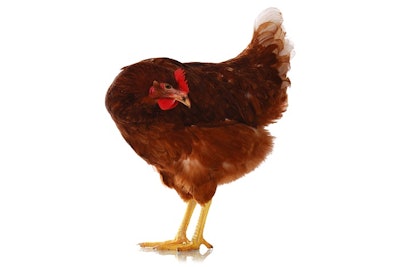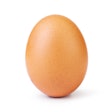
Brown egg layers show better production results when housed in free-range or cage-free housing compared to conventional systems, according to research conducted by North Carolina State University (NCSU).
The study was done in conjunction with other research conducted at NCSU that found white egg layers have better production in caged housing, compared to extensive environments.
In this latest trial, the researchers determined that access to high fiber forage in free-range environments, along with natural sunlight, along with the enrichments in cage-free housing benefitted the overall production of brown egg layers.
Even though the majority of U.S. egg layers are housed in conventional systems, housing laws, such as Proposition 12, pressure from animal welfare groups and cage-free commitments from retailers are driving the layer industry towards a greater use of extensive housing environments, explained Benjamin Alig, NCSU Graduate Research Assistant, at 2023 PEAK, a poultry production tradeshow held in in Minneapolis, Minnesota.
More about the study
The study evaluated the differences between housing brown egg layers in conventional cages, enrichable colony cages, enriched colony cages, cage-free and free-range environments.
“The free-range and the colony-caged hens had the highest egg production, but also showed the most feed consumption. The cage-free and free-range hens showed the best feed efficiency,” Alig said.
Additionally, the study found that the free-range layers had the heaviest eggs while the caged layers had the lightest eggs. The free-range hens showed the lowest mortality while the colony caged hens had the highest. Also, the free-range hens were the heaviest, at 2.21 kg/bird, with the cage-free hens at 2.1 kg/bird. The hens in the enrichable colonies were the lightest at 2.05 kg/bird.
“We saw that the cage-free and free-range hens had the best feed efficiency out of all the birds, which potentially indicates that our understanding of efficiency in these environments needs to be reevaluated,” Alig added.
The brown cage-free and free-range hens produced the highest proportion of grade A eggs compared to the other environments, which could be attributed to softer nesting material.
“The free-range and cage-free birds also produced the eggs with the strongest shells,” Alig said.
He added that this potentially indicates the need for improved flooring material in cages, as many eggs are broken on hard wire flooring.
While the free-range hens showed better production metrics compared to the hens in other housing environments, Alig noted that the free-range hens took longer to reach peak egg production. This could be due to nutrient allocation for activity, potential stress when the birds were allowed outside or the differences in light intensity between standard housing and the outdoors.
According to Alig, these differences should be considered when designing and constructing housing environments for commercial egg farms, especially when housing brown egg layers.


















